The Dutch solution to sea level rise: make holes in the dikes
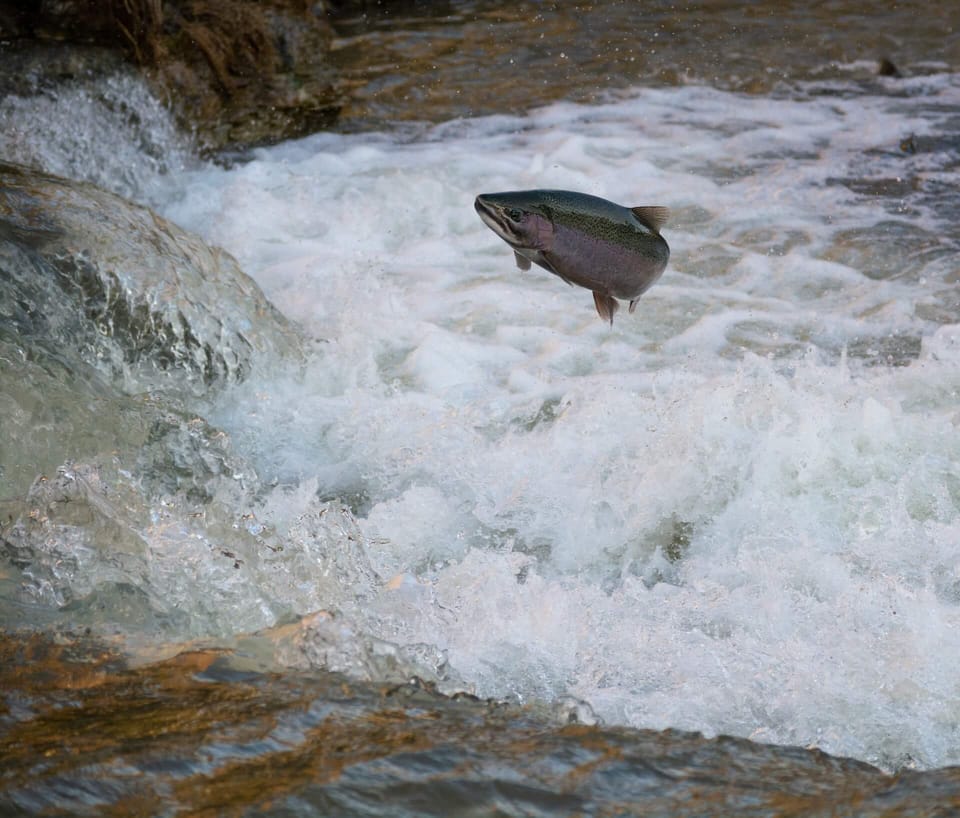
The number of dams and dikes is still increasing worldwide. They provide protection against high water and fresh water basins. They are also used preventively against climate change and rising sea levels. However, sooner or later these measures will cause ecological disasters.
The Netherlands is internationally famous for its age-old polders, water mills, delta works and the Afsluitdijk. But as of recently it’s the Fish migration river that draws attention. Experts regard the Fish migration river in the Afsluitdijk as an important solution for the major challenges that many deltas in the world face.
Whereas back in the day the major concern was with water safety and quality, at present the focus is on how technical interventions in nature offer benefits for both humans and the flora and fauna. This means building with, instead of against nature. Water management in the 20th century was about shortening the coast line and building dikes, the 21st century is about nature inclusivity.
Far below sea level
Every month delegations from cities such as Ho Chi Minh City and New Orleans visit the Netherlands in order to learn from this hydraulic engineering tradition.
That should hardly come as a surprise because half of the Netherlands, including the political centre in The Hague and the capital Amsterdam, are situated far below sea level. Being a guiding country with regard to hydraulic engineering, the Netherlands has been dealing with water for centuries in a very effective and innovative way.
It started with terpen (artificial dwelling mounds) and dikes to keep dry feet and it developed into applications in which water and nature became an integral part of the approach. The Fish migration river is a good example of this.
For many delta cities the Afsluitdijk is an interesting example when it comes to successfully closing off the sea and creating new land and water security. But this success story has a downside too, because when the final gap in the Afsluitdijk was closed in 1932, an ecological disaster occurred in the now closed-off inland water, currently called the IJsselmeer.
The dam connects the provinces of Noord-Holland and Friesland, but at the same time it creates a hard divide between the salty Wadden Sea and the fresh-water Ijsselmeer. Migratory fish species that depend on both salty and fresh water can no longer use their ancient international routes to spawning and living grounds. The result was a drastic dwindling of fish stocks.
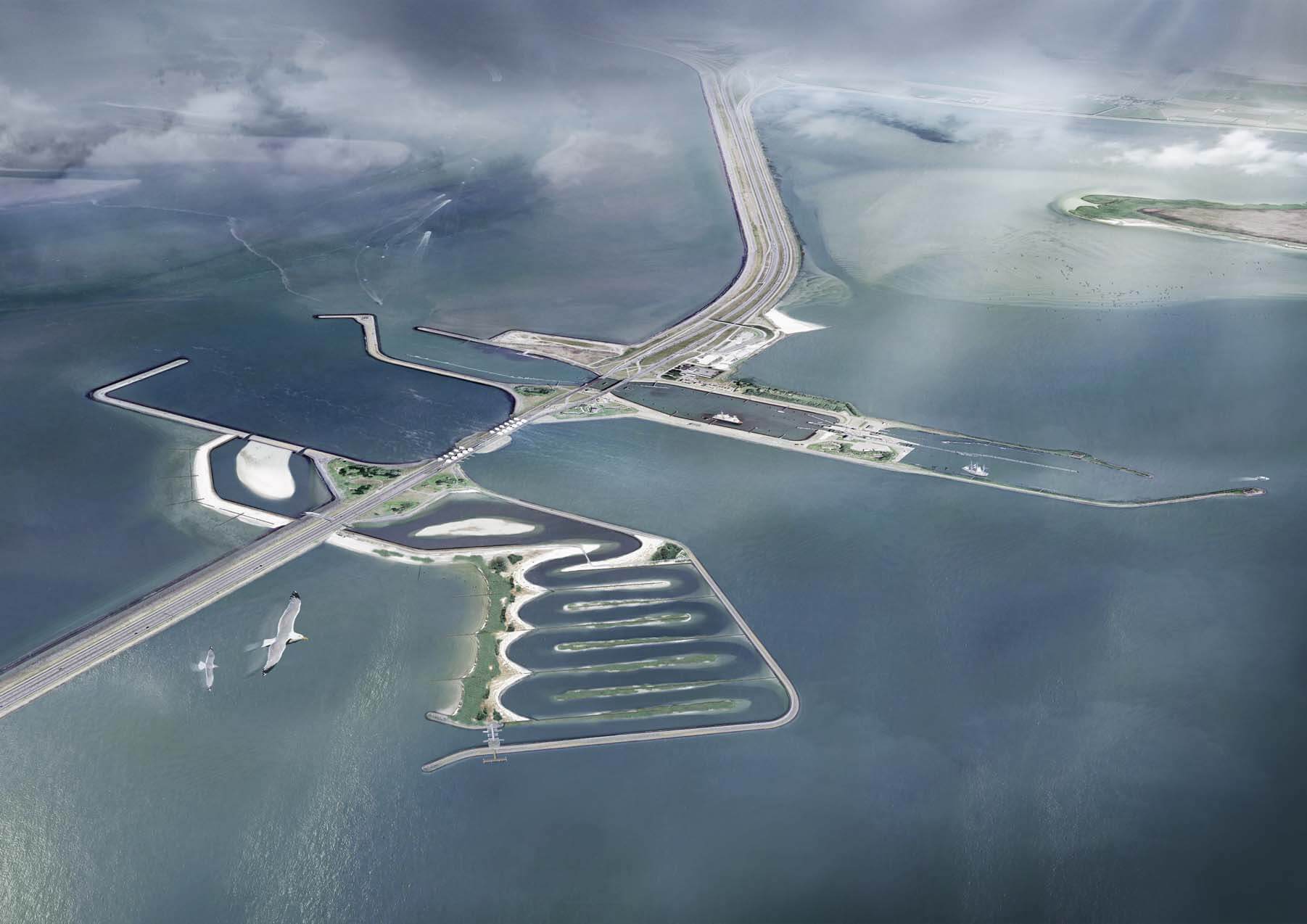
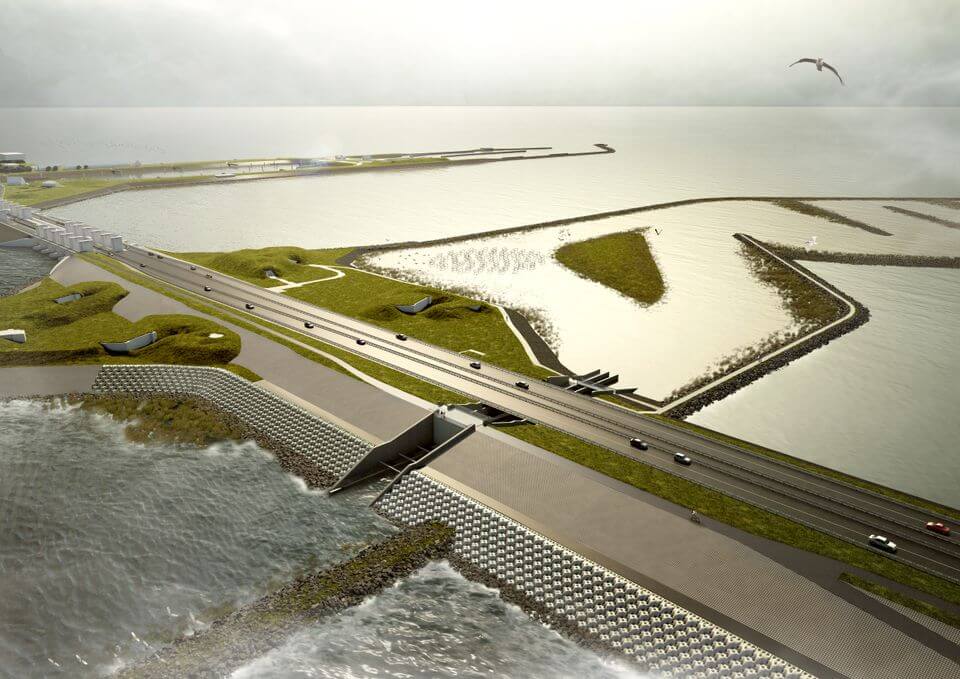
Restoring ecological contact
The safety benefits that were paramount back in the day thus also have a downside. “We drew a lesson from it and we got to work”, says Arjan Berkhuysen, chairman of the Waddenvereniging (Wadden association), the organisation that aims to protect Unesco World Heritage site the Wadden Sea. He took the initiative of – simultaneously with the large-scale renovation of the Afsluitdijk, which has to be climate proof for the coming 50 years in 2022 – creating a Fish migration river.
“That idea started with a hole in the Afsluitdijk. Because a permanent opening in this sea defence structure is good for migratory fish such as the eel, sea trout, sea lamprey, smelt and the salmon, which need both salty and fresh water to complete their life cycle, to reproduce and the grow up”, says Berkhuysen. “This way we restore an age-old ecological connection between the Wadden Sea and the North Sea on the one side and the Ijsselmeer and the interlinked Rhine basin, a European protected nature reserve, on the other hand.” Berkhuysen went to the local authorities in the province of Fryslân.
"Water management in the 21st century: smart connecting with nature, people and economy" - Arjan Berkhuysen, chairman of the Wadden association
The Fish migration river is a strongly meandering river of over four kilometres long that runs through a ‘hole’ in the Afsluitdijk unhampered 24/7. This well-thought-out length allows fish to gradually get used to the transition from salty to fresh water. At low tide the fresh water flows from the Ijsselmeer to the Wadden Sea and when it’s getting high tide, the flow reverses.
The fish can use the tidal flow to enter the lake without getting exhausted. The fish are attracted to the current by the smell of fresh water (lure current) and as such will have no problem locating the entrance of the Fish migration river. Of course, the current is being controlled and in case of very severe storms the system can be closed. This is important for both retaining the fresh water supply in the Ijsselmeer and the safety of the population.
The artificial river will be created near the sluice complex at Kornwerderzand, a former construction island on the Afsluitdijk. In March 2018 the visitor centre Afsluitdijk Wadden Center will open here. Here visitors from the Netherlands and abroad can let themselves be informed on the Wadden Sea and the Ijsselmeer, the history of the Afsluitdijk and the fish migration in an interesting way.
Visitors can also visit the fish migration river either on foot or by boat and walk right through the Afsluitdijk. This way a technical project – making a passage through the Afsluitdijk and the realisation of an ecological restorative measure – is connected to discovering, experiencing, education, hospitality, citizen-science and recreation & tourism surrounding the theme of Water.
And then there’s also something like the Happy Fish, which brings the urgent message of free fish passage and fish migration all over the world with a Mona-Lisa-like smile. Scientists too can indulge themselves: a scientific testing and research centre will be built in the river that will gather more knowledge on the migratory behaviour of fish. In 2022 at the latest this major tourist magnet of the Afsluitdijk will be delivered.
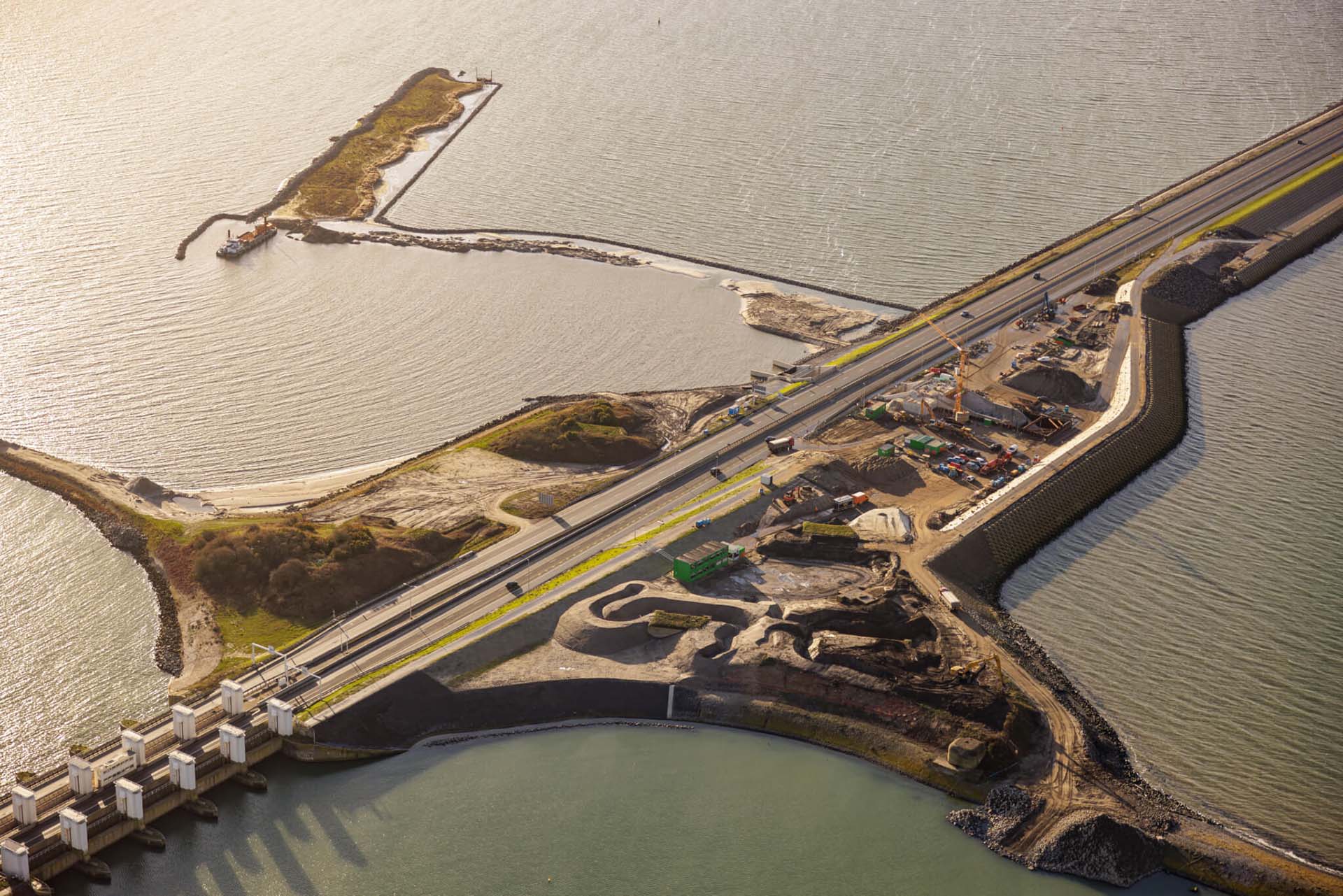
Transcending self-interest
Berkhuysen thinks the project’s merit is primarily in the cooperation between various authorities, engineering agencies, fishermen and nature protectors. “The various parties, each with their own interests, really transcended themselves. This allowed them to connect water management with nature, people and the economy in a smart way. It’s in everyone’s interest if fish can swim freely again.” The development of a Fish migration river indeed matches perfectly with the motto of Cornelis Lely, the designer of the Afsluitdijk: “A people that lives takes care of its future”.
After societal organisations brought up the problem and through-out the basic idea, the province of Fryslân took up the gauntlet. Together with other authorities and the business world a collaboration was set up that further worked out the basic idea into a functional design, they went through the various procedures and arranged the funding of the project.
The plan is for the FMR to be put out to tender in 2018. Johannes Kramer, representative for the province of Fryslân is positive about the project. “The Afsluitdijk separates 6000 kilometres of salt water seas and oceans from 2000 kilometres of fresh water upstream into Europe. I am proud that a small province like ours is going to once again connect these two major water systems.”
Jan Rotgans is one of the fishermen involved in working on a new future. Back in the day he was fishing for eel, but he saw nature change. “Instead of eel these days you find a lot of pacific oysters, soft-shell clams, cockles and razor clams in the Wadden Sea”, Rotgans says. “When eel catches dwindled, I decided to start organising boat trips for tourists. But I always retained the leasing contracts for the fishing grounds because I was convinced eel catches would eventually improve again. Hopefully the Fish migration river will benefit the sector.”
Source of inspiration for other deltas
Nowhere in the world is there something resembling the Fish migration river, even though similar situations elsewhere in the world call for a restoration of places where salt and fresh water meet. By investing in the development of the Fish migration river and other fresh-salt water transitions the Dutch hydraulic engineering sector gains unique knowledge and experience in order to improve ecosystems of migratory fish and to secure food supplies for people.
This is an urgent matter because many species aren’t doing so well. World-wide overfishing and the many barriers have brought the ecosystem out of balance and fish stocks are decreasing, endangering food supplies. Researchers from the United Nations are sounding the alarm: if we don’t take action now, all fish will have vanished from the oceans in 2050.
More and more countries are realising that something needs to be done. The Fish migration river in the Afsluitdijk is one of the solutions for the closed deltas that will help restore our ecosystems. Given the urgency of this matter, foreign delegacies are coming to the Netherlands to learn from the Delta works, with the Afsluitdijk as the perfect example of a new environmentally friendly approach. Deputy Kramer; “The innovative Fish migration river allows The Netherlands to bring about change in more than just one place in the world.”
"Water is the globally connecting challenge" – Henk Ovink, Water representative of The Netherlands
Henk Ovink, the first Water representative of the Netherlands, agrees. In his job as the first water ambassador of the Netherlands he contributes to raising awareness about water, enhancing knowledge on building water-coalitions, both small and large, in order to tackle the water problem both innovatively and sustainably worldwide.
He thinks the Dutch knowledge, skill and experience is unique and essential and he thinks the unique Fish migration river has it all. “Water is the globally connecting challenge. With its integral approach with regard to water scarcity, water safety, water quality and logistics and transport all over the world, the Netherlands can make the difference.”
“With the Fish migration river, we continue our tradition of living with water. Through its safety aspect we also secure the quality of life in and around the water. We built a dike and now we dig a hole in it to find the perfect balance between safety and quality. This Dutch knowledge and skill are unique and I see plenty of opportunities to put it to use internationally.”
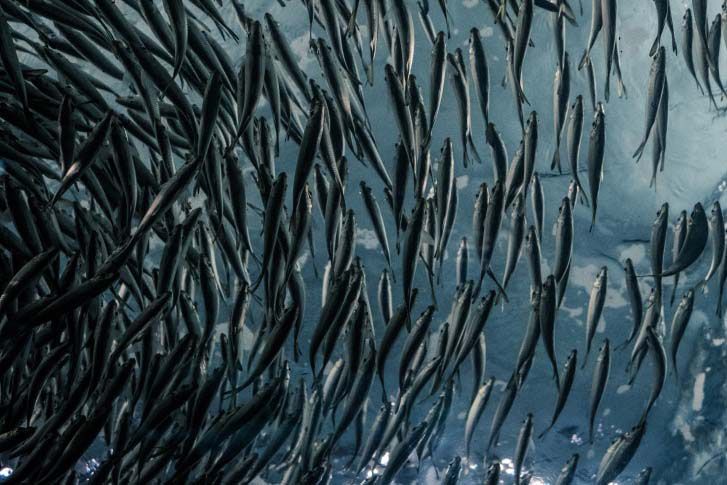
Who will benefit most from the Fish migration river?
The fish that will benefit most from the construction of the Fish migration river include the salmon, the sea lamprey and the eel. Back in the day salmons would swim into the Zuiderzee (as the Ijsselmeer was called before it was dammed) by the tens of thousands. However, now they are rare. Via the rivers they swim on to Germany and Switzerland in order to spawn. Sea lampreys enter the IJsselmeer in springtime and swim on into the smallest rivers in Southern Limburg and Germany, spawn, and the young animals follow the river downstream to grow up in the sea. The European eel is born in the Sargasso Sea, an area in the Atlantic Ocean east of the Caribbean. The larvae float along with the Gulf current to the coastal areas of their habitat, such as the Wadden Sea. Here they will live some 20 years before starting a journey of some 6,000 kilometres to their spawning grounds in order to reproduce.



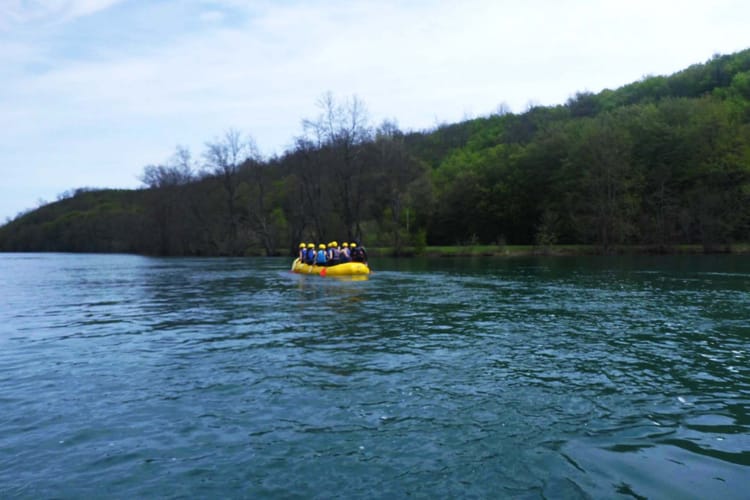


Member discussion